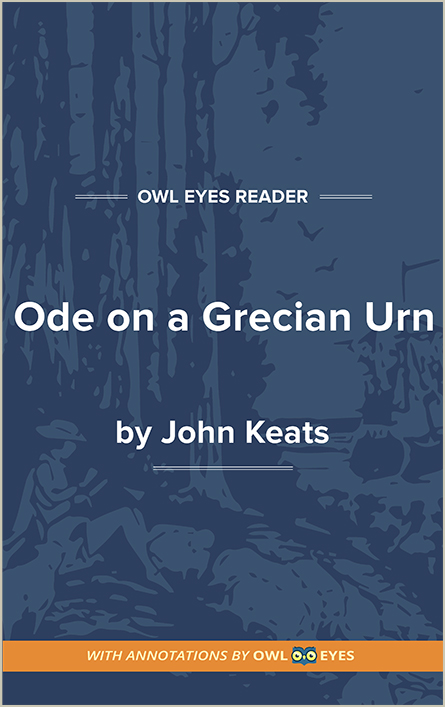Study Guide
Analysis Pages
Summary
An ode, typically a lengthy lyric poem dealing with lofty emotions, is dignified in style and serious in tone. Lyric poems, in general, explore elusive inner feelings. John Keats, a widely admired poet of the English Romantic period, composed his “Ode on a Grecian Urn” in five stanzas (sections), each containing ten lines of rhymed iambic pentameter. Keats invented his own rhyme scheme for the ode.
In stanza one, the poet speaks of a ceramic urn from ancient Greece; such urns often were used to hold the ashes of the dead and were decorated with scenes from daily life or from myth and legend. The imaginary urn of “Ode on a Grecian Urn” is a composite of several urns that Keats probably had seen at the British Museum or in books. He also might have been influenced by the Elgin Marbles, decorated portions of the Parthenon in Athens that had been brought to England, not without much controversy, in the early nineteenth century. One could thus imagine the poet either standing in front of a museum exhibit or looking at an illustration in an art book.
In describing the urn, Keats is reflecting on what he sees, engaging in an internal debate. The term “ekphrasis” means a description of or a meditation on a visual work of art; there exist examples of ekphrasis in literature from the classical to the modern. The poet is impressed with the antiquity of the urn and its pictured scenes, images that appear to affect the poet more strongly than do the poem’s words—the poet, though, seems unsure of the exact legend being conveyed by the pictured scenes. The urn depicts several scenes, including a wild party in which men chase after girls, the playing of musical instruments such as pipes and timbrels (tambourine-like percussion instruments), and a sacrificial ritual. The poet is impressed by both the frenzy of action on the urn and the urn’s status as a still object—an artifact quietly persisting for ages—but is frustrated by the silent urn’s inability to answer questions.
In stanza two, the poet addresses particular parts of the urn’s images—the pipes and their imagined melodies and a lover attempting to kiss the maiden—and comments on their eternal sameness. He notes that although the melodies being played by the pipers on the urn cannot be heard, this silence is somehow better, perhaps because the melodies dwell in a higher part of the mind, or the imagination or fancy, as this part of the mind had been termed at the time: “Heard melodies are sweet, but those unheard/ Are sweeter.”
The poet also addresses the youthful lover, presumably one of the pursuing men of stanza one. Though this lover will never catch his maiden for a kiss, she can never fade nor ever become less than fair, thus implying that the imagined world on the vase is superior to the real world of...
(The entire page is 747 words.)
Owl Eyes subscribers get unlimited access to our expert annotations, analyses, and study guides on your favorite texts. Master the classics for less than $5/month!

